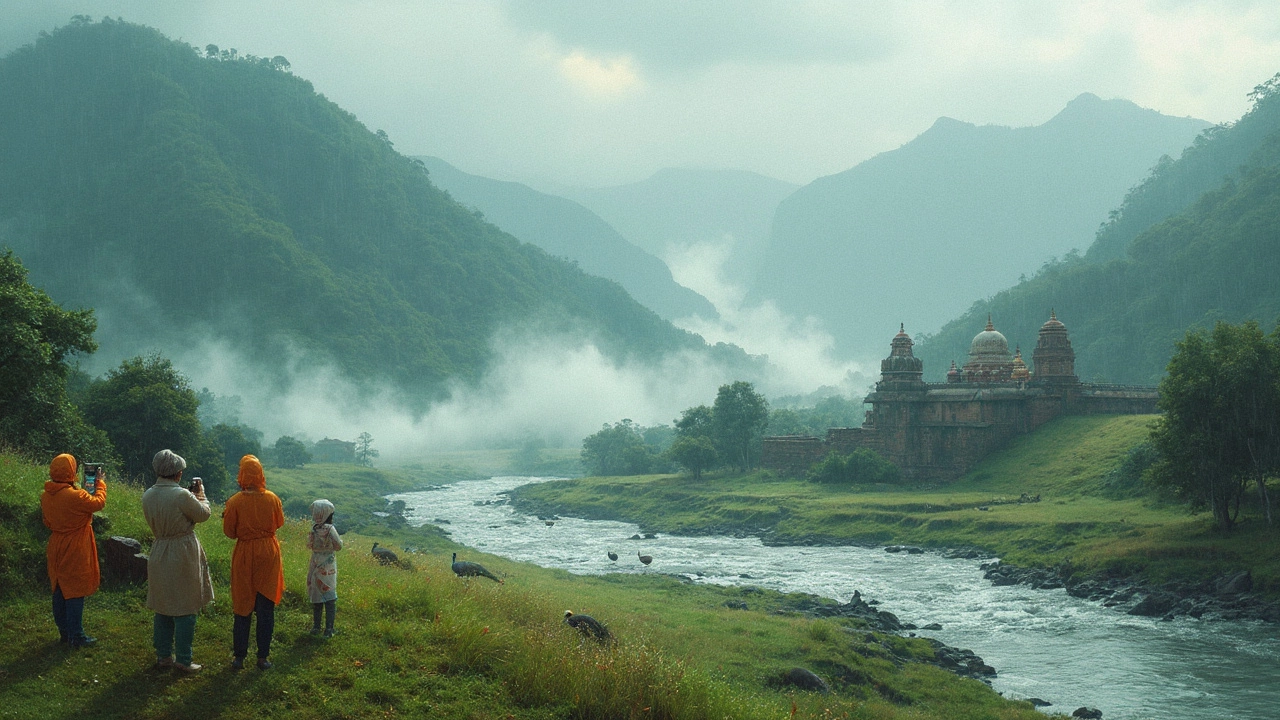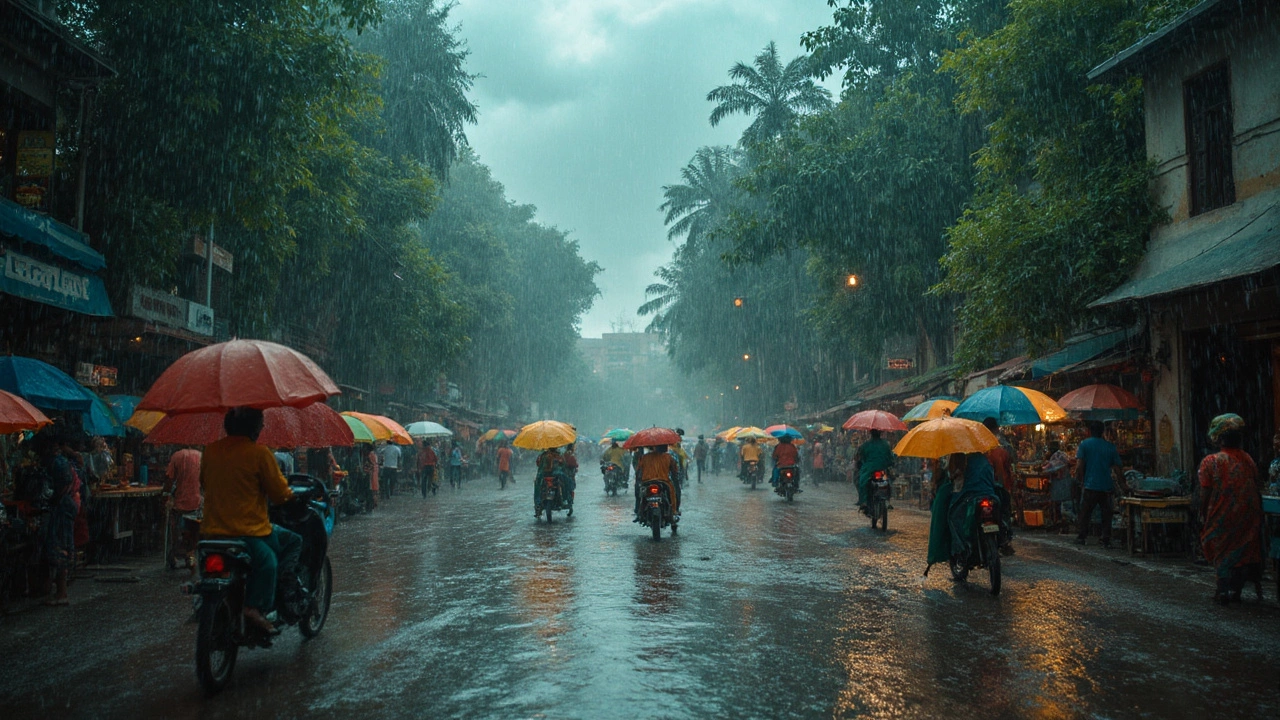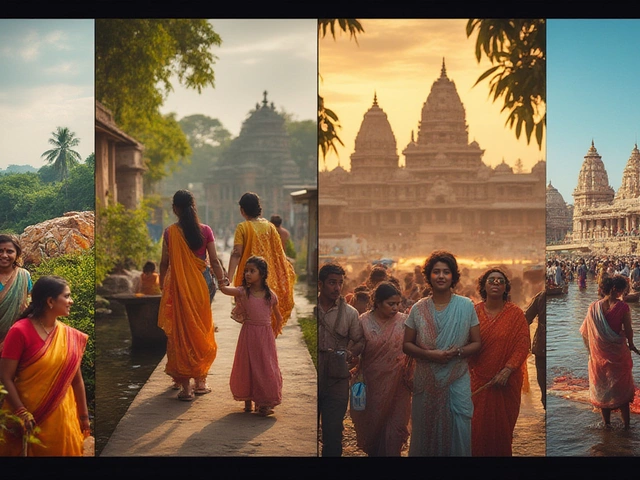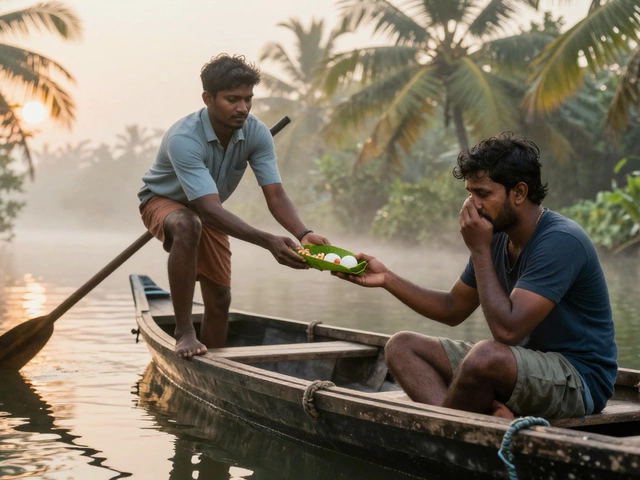Most people know about India’s sweltering summers, but July’s rain is the real game-changer, especially up north. When the monsoon hits full force in July, it dumps more water than any other month—so much that rivers swell, train schedules get thrown, and entire regions turn bright green almost overnight.
Planning a trip up north? You’ll want to know exactly how July’s rain works, because it can either ruin your shoes or give you the most epic waterfalls and misty mountains you’ve ever seen. Don’t expect gentle drizzles. We’re talking sudden, heavy downpours that can block roads (sometimes for days) and cause major flight delays, yet also bring life to parched landscapes and local festivals.
There are some serious upsides if you’re ready. Think fewer crowds at usually jam-packed sites like Shimla or Rishikesh, crazy-cheap hotel deals, and photo ops you just can’t get during dry season. But ignore the weather, and you’ll end up soaked, frustrated, or even stranded. Understanding July’s role in the monsoon isn’t just trivia—it’s the secret to a trip that’s either a disaster or total magic.
- What Makes July the Wettest Month in India?
- How July Changes North India’s Landscape
- Monsoon Travel: Perks and Pitfalls
- Tips for Exploring North India During Peak Monsoon
What Makes July the Wettest Month in India?
Every year, July wins the title of wettest month India by a mile—and it all comes down to the monsoon. By July, the southwest monsoon has powered up after arriving in Kerala in early June, pushing rain clouds deep into North India. It’s not a gentle start; the rain really hits its stride, blasting places like Delhi, Lucknow, and Himachal Pradesh with heavy showers almost daily.
The science behind this is simple but fascinating. Warm, moisture-packed winds from the Indian Ocean crash into the Himalayas and northern plains. The mountains force the air upward, squeezing out massive amounts of rain. That’s why you’ll see those intense downpours all over North India in July—even if some spots go dry the rest of the year.
To give you a clear idea, here’s a little breakdown of average rainfall in July from popular North Indian cities:
| City | Average Rainfall (July, mm) |
|---|---|
| Delhi | 210 |
| Shimla | 410 |
| Lucknow | 280 |
| Varanasi | 310 |
That much rain isn’t a fluke. The wind patterns and sea temperatures make July the perfect storm month—literally. And after weeks of dry heat in May and June, locals often welcome it, even if tourists need better raincoats and backup travel plans. Understanding the science and timing behind July’s wettest days can help you decide whether to book a train or just kick back at your hotel to watch the skies open up.
How July Changes North India’s Landscape
When people call July the wettest month in India, they’re not joking around. North India, which was dusty and dry in May and early June, goes through a wild transformation once the monsoon clouds roll in. Green quickly takes over the browns and yellows—you’ll notice rice paddies and tea gardens springing to life while riverbanks swell and lakes almost overflow.
Big cities like Delhi, Chandigarh, and Jaipur see their parks and gardens explode with fresh growth. Rural areas become blanketed in green as farmers finally plant their crops, mostly rice and maize, banking on the reliable July rains. If you’re heading towards the Himalayan foothills—places like Manali, Shimla, or Mussoorie—you’ll see a shift from hazy, dry views to landscapes wrapped in clouds, waterfalls gushing along every roadside, and rivers like the Ganges and Beas surging with rainwater.
July rainfall also kicks off a few not-so-great side effects. Flash floods aren’t rare in spots like Uttarakhand or Himachal Pradesh, and landslides can hit mountain roads hard, which sometimes means major detours or canceled travel plans. And in low-lying plains—think around Lucknow and Patna—urban flooding is common, especially after a heavy spell. You’ll want to keep tabs on local news for alerts if you’re traveling by road or train.
Here’s a quick snapshot showing average July rainfall (in mm) in popular North India spots:
| City/Region | Average July Rainfall (mm) |
|---|---|
| Delhi | 210 |
| Shimla | 392 |
| Rishikesh | 309 |
| Varanasi | 285 |
| Manali | 349 |
What does this mean if you’re traveling? You’ll see North India at its freshest and most alive in July, but always plan around the weather. Certain trekking paths might close, but waterfalls, lakes, and rivers will be at their best. Plus, if you love photographing dramatic cloudscapes or epic storms, July is the prime time to visit.

Monsoon Travel: Perks and Pitfalls
The wettest month in India—July—hits North India hard. But it's not all doom and gloom if you're thinking about travel. The rains have a way of making everything look washed clean. Rivers roar, mountains are wrapped in clouds, and cities like Manali and Mussoorie get surprisingly peaceful. Still, there are two sides to every coin, especially during July rainfall.
Perks of traveling North India during monsoon:
- Hotel deals: With fewer tourists braving the rain, hotels slash prices fast. You’ll find last-minute rooms at half the cost compared to peak season.
- Low crowds: That hike to Triund in Dharamshala or visit to the Taj Mahal? Way less packed. Even railways are quieter—except during festival rush.
- Nature at its best: Valleys in Uttarakhand and Himachal Pradesh are at their greenest and wildest. Waterfalls double in size, and the Kaas Plateau blooms with flowers.
- Festivals: Sawan fairs in Uttar Pradesh and Rajasthan's Teej are all about music, colors, and rain-welcoming rituals you won't see in the dry months.
Pitfalls you have to watch out for:
- Roadblocks and landslides: Hill stations get cut off thanks to heavy rains. The Manali-Leh highway often shuts for days due to mudslides.
- Delayed trains & flights: Indian Railways and local airports see delays and cancellations when there's too much rain, especially in July.
- Leech attacks & slippery trails: Adventure trips get tricky as jungle trails get slushy, and you’ll have to deal with muddy shoes and occasionally, bloodsucker leeches.
- Health risks: Wet conditions mean more mosquitoes (think dengue and malaria) and higher chances of water contamination. Eat and drink with extra caution.
Need a clearer picture? Here’s a quick snapshot comparing travel in July versus other months:
| Month | Avg. Rainfall (mm) | Hotel Prices | Crowds | Travel Delays |
|---|---|---|---|---|
| May (pre-monsoon) | 20-50 | High | Heavy | Low |
| July (monsoon) | 250-450 | Low | Low | High |
| October (post-monsoon) | 15-30 | Medium | Medium | Low |
So, if your big goal is to see North India's wild side (and save money), grabbing a poncho and jumping on a train in July could be totally worth it. But pack smart, plan backup routes, and don’t expect everything to go on schedule during monsoon travel.
Tips for Exploring North India During Peak Monsoon
If you’re thinking of traveling during July rainfall in North India, a little planning goes a long way. The monsoon shakes things up in ways you won’t expect, so knowing what to pack and where to go can keep your trip from becoming a soggy mess.
- Pack Smart — Waterproof All the Things: Invest in a solid rain jacket, waterproof shoes (forget open sandals!), and make sure your travel bag keeps your electronics dry. A quick-dry microfiber towel is gold when you’re caught in a shower.
- Go for Monsoon-Friendly Destinations: Some places get battered by heavy rain and landslides (like Himachal’s narrow mountain roads), while others, like Delhi, Agra, or Amritsar, are manageable with just short bursts of rain. Always check local weather and road conditions before you head out.
- Stay Flexible — And Check for Closures: Trains and flights get delayed or canceled frequently. Have backup plans and book hotels with flexible cancellation policies. Download local weather apps so you’re not caught off guard by a sudden downpour.
- Health and Safety Come First: Eat fresh, cooked food—monsoon increases the risk of waterborne diseases. Carry some mosquito repellent since standing water brings out the bugs. Avoid swimming in rivers—water levels can go up fast and currents get strong in July.
- Capture the Good Stuff: Pack a simple rain cover for your phone or camera. The vibrant green countryside, dramatic skies, and fewer crowds make July a dream for photographers if you’re ready.
Curious how much rain you can expect? Here’s a quick look at average July rainfall in some top North India tourist cities:
| City | Average July Rainfall (mm) |
|---|---|
| Delhi | 210 |
| Shimla | 375 |
| Haridwar | 360 |
| Varanasi | 300 |
Keep an eye on local news and updates, especially if you’re traveling to Uttarakhand or Himachal—landslides and sudden road closures aren’t rare here in peak North India monsoon. But with some simple prep, you’ll experience North India in all its wild, monsoon-soaked glory—just the way July intended.





